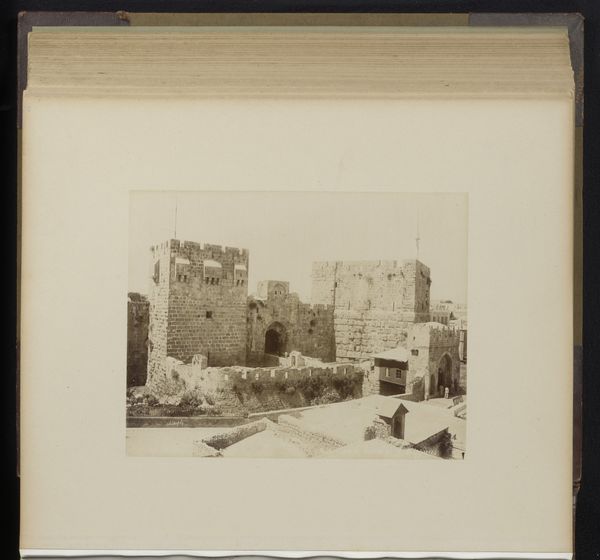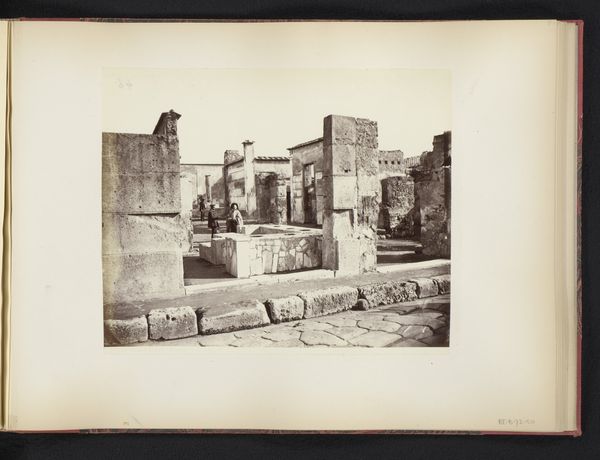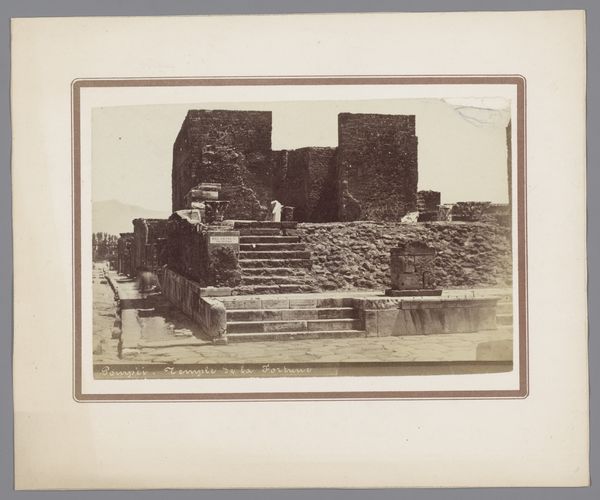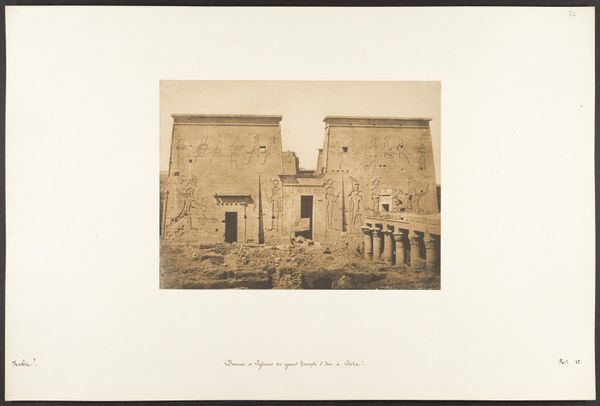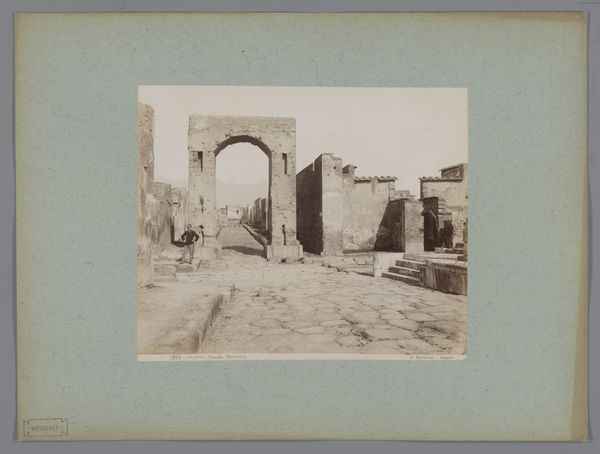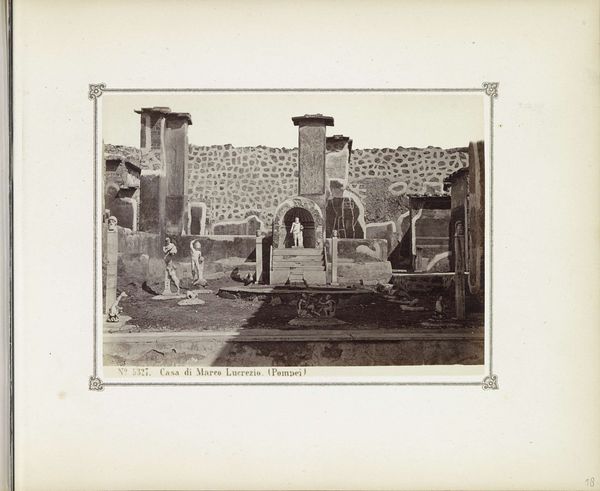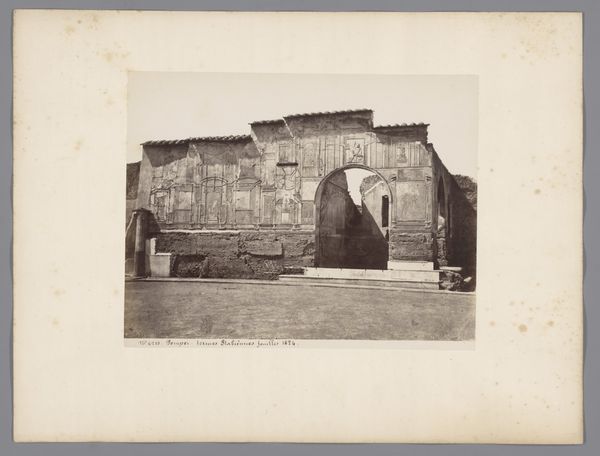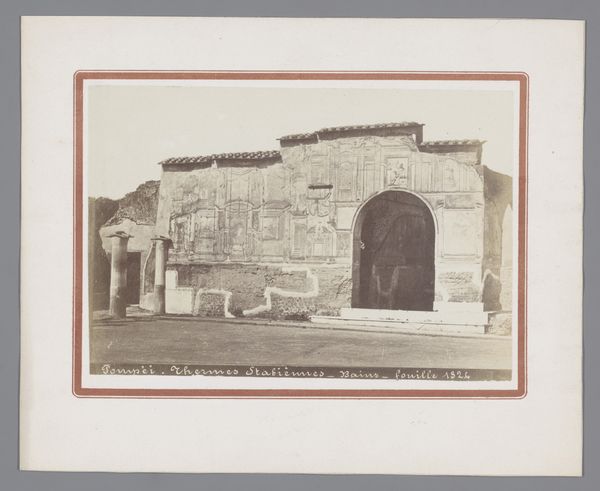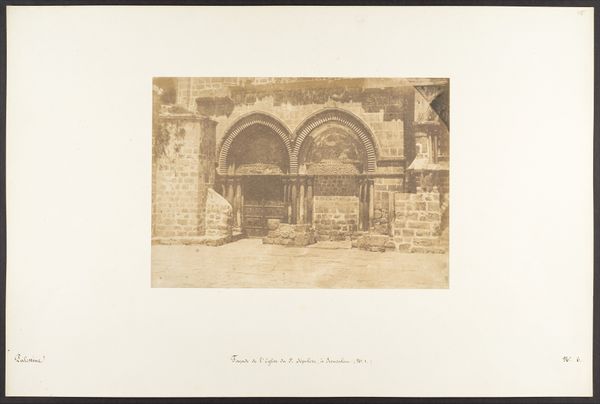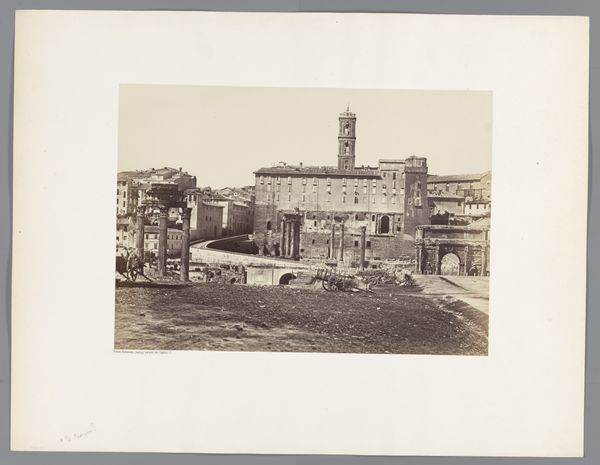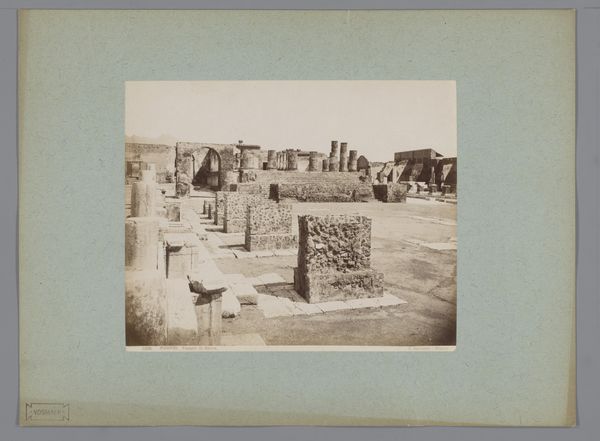
Dimensions: height 107 mm, width 154 mm, height 179 mm, width 212 mm
Copyright: Rijks Museum: Open Domain
Editor: Here we have Giorgio Sommer's gelatin silver print, taken sometime between 1857 and 1914, titled "Restanten van het huis van Marcus Lucretius te Pompeï", or Remains of the House of Marcus Lucretius in Pompeii. Looking at this image of ruins, I'm struck by the layered effect – the relatively intact photo itself contrasting with the ruined structure it depicts. What are your thoughts on this? Curator: It’s fascinating to consider this image as a document of labor. Look at the labor involved in unearthing Pompeii, then Sommer's labor in producing the photograph itself. He’s not just capturing the remains; he's actively participating in their re-presentation, in their consumption by a new audience. Editor: So you see the photograph less as an artistic endeavor and more as a form of… documentation and consumption? Curator: Exactly! The choice of the gelatin-silver process, allows for mass production. Think about who consumed these images: archaeologists, tourists, the wealthy eager to possess a piece of antiquity. The photo becomes a commodity, divorced from the physical and social labor of its creation. The materiality of the ruin and of the photograph serve as indices of both ancient and modern social hierarchies. What does that say about our relationship to the past? Editor: I never considered the social impact and value-laden act of documenting labor as it related to archeology, I was viewing it through an artist's lens. Now I understand how labor is an index. Thank you. Curator: And I appreciate you pointing out its relationship to aesthetics - these historical depictions and new forms of consuming history open paths for new forms of representation to grow from their ruin.
Comments
No comments
Be the first to comment and join the conversation on the ultimate creative platform.
